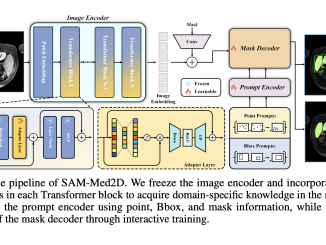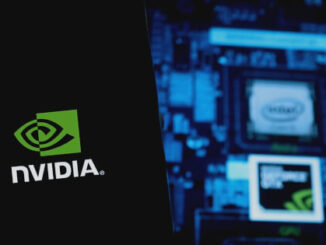
Subscribe to our daily and weekly newsletters for the freshest updates and exclusive material on leading AI coverage in the industry. Discover More
Google’s Gemini AI has discreetly transformed the artificial intelligence realm, reaching a landmark that many deemed unachievable: the concurrent handling of various visual streams in real-time.
This innovation—enabling Gemini to not only observe live video streams but also to evaluate static images simultaneously—wasn’t revealed through Google’s flagship services. Instead, it surfaced from an experimental tool named “AnyChat.”
This unforeseen advancement emphasizes the unexploited capabilities of Gemini’s framework, stretching the limits of AI’s capacity to manage intricate, multi-modal interactions. Historically, AI systems have been confined to managing either live video feeds or still photos, but never both concurrently. With AnyChat, that limit has been emphatically surpassed.
“Even Gemini’s subscription service isn’t capable of this yet,” states Ahsen Khaliq, the lead in machine learning at Gradio and the innovator of AnyChat, in an exclusive discussion with VentureBeat. “You can genuinely engage in a dialogue with AI while it processes both your live video input and any images you wish to provide.”
How Google’s Gemini is discreetly transforming AI vision
The technological achievement underpinning Gemini’s multi-stream capability resides in its sophisticated neural framework—an infrastructure which AnyChat adeptly utilizes to process numerous visual inputs without compromising efficiency. This functionality already exists in Gemini’s API but has yet to be accessible in Google’s official applications for users.
In contrast, the computational requirements of various AI systems, such as ChatGPT, restrict them to single-stream processing. For instance, ChatGPT presently disables live video streaming whenever an image is uploaded. Managing just one video input can burden resources, let alone amalgamating it with static image evaluation.
The prospective uses of this innovation are both revolutionary and immediate. Students can now direct their camera at a calculus question while displaying a textbook to Gemini for step-by-step assistance. Artists may share works-in-progress alongside reference images, obtaining detailed, real-time critiques on composition and technique.

The technology behind Gemini’s multi-stream AI advancement
The significance of AnyChat’s achievement lies not merely in the technology itself but in how it bypasses the restrictions of Gemini’s official rollout. This breakthrough was enabled by specialized permissions from Google’s Gemini API, allowing AnyChat to utilize features that are not yet available in Google’s own services.
By leveraging these extended permissions, AnyChat fine-tunes Gemini’s attention mechanisms to observe and interpret multiple visual inputs concurrently—all while preserving conversational coherence. Developers can effortlessly replicate this functionality with minimal code, as illustrated by AnyChat’s implementation of Gradio, an open-source platform for creating machine learning interfaces.
For instance, developers can initiate their own Gemini-powered video chat tool with image upload capabilities using the following code snippet:

advanced AI instruments.(Credit: Hugging Face / Gradio)
This clarity emphasizes that AnyChat isn’t merely an illustration of Gemini’s capabilities but a resource for developers eager to create tailored vision-enhanced AI solutions.
What elevates AnyChat’s accomplishment is not solely the technology itself but how it bypasses the constraints of Gemini’s formal deployment. This innovation was made feasible through specific permissions from Google’s Gemini team, allowing AnyChat to utilize features that are not available on Google’s own platforms.
“The live video functionality in Google AI Studio cannot process uploaded images during streaming,” Khaliq informed VentureBeat. “Currently, no other platform has executed this kind of concurrent processing.”
The experimental application that unveiled Gemini’s concealed abilities
AnyChat’s triumph wasn’t purely coincidental. The platform’s creators collaborated closely with Gemini’s technical infrastructure to extend its boundaries. This collaboration unveiled an aspect of Gemini that even Google’s official instruments have yet to investigate.
This pioneering method enabled AnyChat to manage concurrent streams of live video and static visuals, effectively shattering the “single-stream barrier.” The outcome is a platform that feels more vibrant, intuitive, and capable of addressing real-world scenarios far more efficiently than its rivals.
Why concurrent visual processing is revolutionary
The ramifications of Gemini’s enhanced capabilities extend well beyond creative instruments and casual AI interactions. Envision a healthcare provider displaying an AI both real-time patient symptoms and past diagnostic images simultaneously. Engineers might contrast real-time equipment performance against technical blueprints, receiving immediate feedback. Quality assurance teams could align production line outcomes with reference benchmarks with unmatched precision and efficiency.
In the realm of education, the possibilities are groundbreaking. Learners can utilize Gemini in real-time to scrutinize textbooks while tackling practice problems, receiving context-sensitive assistance that connects static and dynamic educational settings. For artists and designers, the capacity to present multiple visual inputs at once opens up fresh pathways for creative collaboration and critique.
What AnyChat’s achievement signifies for the future of AI advancement
At present, AnyChat continues to be an experimental developer platform, functioning under expanded rate limits provided by Gemini’s creators. However, its success indicates that concurrent, multi-stream AI vision is no longer just a distant dream—it’s an existing reality, poised for large-scale implementation.
AnyChat’s rise cultivates intriguing inquiries. Why hasn’t Gemini’s official launch incorporated this capability? Is it an oversight, a strategic decision regarding resource distribution, or does it signify that smaller, more nimble developers are leading the forthcoming wave of innovation?
As the AI competition intensifies, the lesson from AnyChat is unmistakable: the most substantial breakthroughs might not always emerge from the expansive research facilities of technology behemoths. Instead, they may originate from independent developers who recognize potential in existing technologies—and dare to push the boundaries.
With Gemini’s revolutionary architecture now validated for multi-stream processing, the groundwork is laid for a new epoch of AI applications. Whether Google will integrate this capability into its official platforms remains uncertain. However, one aspect is evident: the divide between what AI can accomplish and what it officially executes has just become significantly more intriguing.









1 Trackback / Pingback